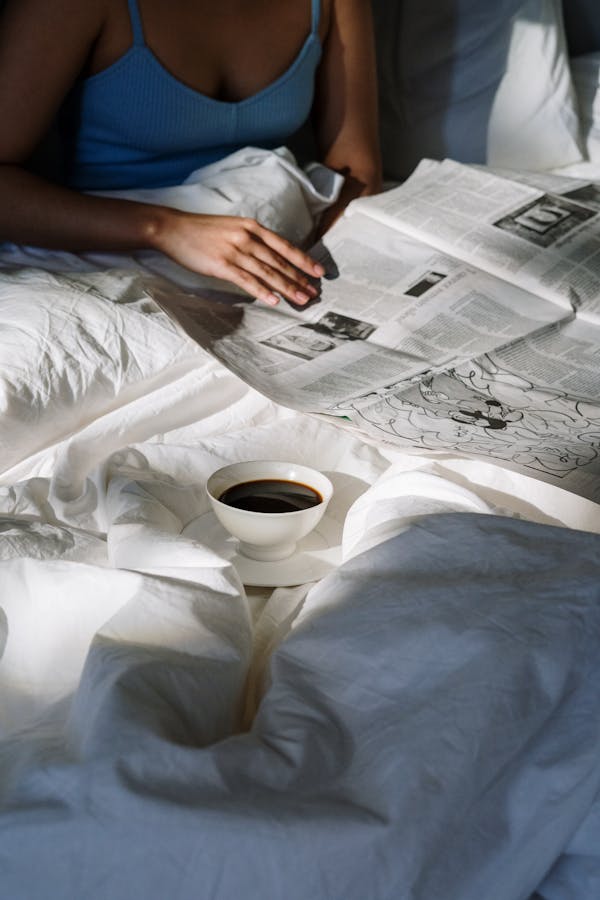Tour an Austin, Texas Home Built with Longevity in Mind from the Ground-Up


Most days Jessie Bloede’s Austin street is like a scene out of Leave It to Beaver. She and her husband Forrest’s two sons (ages 9 and 10) ride their bikes to school, pedaling by leafy trees and historic bungalows—much like the one the family lived in for four-and-a-half years. All of their close friends live nearby, including the general contractor who would help bring their brand-new two-story house to life. “His child goes to school with our boys, so we could hold him accountable every morning,” says Bloede, laughing.
Starting from scratch wasn’t the original plan, but when adding onto the existing structure proved to be complicated and expensive given the quirky floor layout, the Bloedes packed up their things, moved into a rental down the block, and brought in architect Elizabeth Baird and designer Avery Cox to work their magic. Seemingly small details like thin window frames with near-perfect Sheetrock returns and curved cased openings make the fresh space feel high-end. “You can tell there were no corners cut,” says Baird. “Because you can’t cut corners with this kind of design.”
Window of Opportunity


The orientation of the quarter-acre lot worked to the architect’s advantage. It’s north-south facing, meaning Baird could deck out the back of the home in windows without worrying about the family’s utility bill skyrocketing. (In Texas the hottest sun comes from the west.) “They almost never have to turn a light on during the day, which is always a goal of mine,” she says.




The streamlined Windsor Pinnacle frames are wood on the inside, so they could be painted, but clad in metal on the outside, giving the traditional cedar shingle exterior a modern twist. The stucco-plastered chimney and bronze-tone roof tie it all together.
Open Bar–Meets–Kitchen




“I love off colors,” says Cox, describing the terracotta Urban Electric pendant lamp over the kitchen island and the khaki green cabinets. These muddy, nature-inspired hues anchor the open-concept space. “I think if we would have done white, it would have looked like a museum,” says Bloede. Cox went so far as to match the plaster-coated vent hood to the cupboards color.
Continuing the cabinets up to the ceiling was a must storage-wise, so in order to introduce some lightness back into the room, Baird made some of the door fronts glass and incorporated open shelving nooks into the mix. The architect visually differentiated the eating area from the living space by lining the ceiling with now-boxed-in beams.


The large appliance cabinet in the corner by the sink helps keep countertop clutter to a minimum, but it’s the pull-out refrigerator drawers, situated within the island, that get the most use these days. (One is for juice boxes and Lacroix; the other is for wine.) “It really is the center of the home,” says Bloede.


Having always lived in older houses, Bloede was determined to re-create that character-rich feeling, no matter how fresh the drywall was. “It was a little hard for me to imagine this house without old knobs or creaky wood floors,” she says. On a trip to the Round Top Antiques Fair last year, she stumbled across a vendor selling 18th-century French doors. “The paint was still peeling off some of them,” she recalls. The aged pieces (now complete with knobs she sourced at Olde Good Things) separate the office from the entryway.
Cox sourced samples of terrazzo for the project before they actually knew how they were going to incorporate the trendy material. The fireplace hearth proved to be the perfect spot. It’s out in the open and visible to guests, but it’s low and not so in your face. The orange flecks draw out the golden tones of the white oak floors and the brick inside the firebox.
The Staycation-Ready En Suite


For years the couple had shared a bathroom with their kids, so this time around they were craving a spot to call their own. “Let’s get the biggest tub we can find,” Bloede told Baird and Cox. In order to achieve true spa vibes, they coated the walls in Venetian plaster—well, everywhere except around the shower and tub (there, Cox used a faux concrete treatment that’s water-repellent).


By floating the vanity off the ground, Baird created the illusion of added space. In addition to cane-lined cabinet storage for towels and extra products, Bloede asked for parquet floors. Budget constraints didn’t allow for wood, so they ended up achieving the look by placing affordable white subway tiles in a herringbone pattern.


The playful powder room is one of two spaces in the home with wallpaper (this treatment is fittingly dubbed Safari Soiree.) The luxe-looking sink is made out of absolute black granite, but Cox surrounded it with an intricate backsplash to elevate the simple stone.




The couple made some kid-friendly decisions, like adding extra insulation between the second floor (where the boys’ bedrooms are) and the first floor (where Mom and Dad sleep), but they also pictured what life would be like in the decades to come. While the kids share a shower and toilet area, they each have their own sink, vanity, and laundry chute in another spot, so they’re not always bumping into one another.
This was the most important lesson Bloede learned when she polled all her friends who had built homes from the ground up. “I asked them: What’s one thing you wish you would have done?” she recalls. “Almost all of them said to design the house you’ll need in 10 years, not the one you need today.”
The Goods
Go-to local vintage shop or resource: The inventory at the Austin Antique Mall is always changing. Also Reiss Studio, the showroom partner to Liz Macphail Interiors. She has the best eye. —Avery Cox
Go-to online home store or site: Olde Good Things, Margaret Ashe Design Store, and Ferm Living. —Cox
Favorite source for plants and gardening supplies: East Austin Succulents, Great Outdoors, and Shoal Creek Nursery. —Elizabeth Baird
The nicest contractor we’ve ever met: Roost Custom Homes.
The electrician who can do no wrong: Terry Maxwell.
Hardest-working plumber in the business: Chris Miranda with Greater Austin Plumbing.
Our Winter Renovation issue is here! Subscribe now to step inside Leanne Ford’s latest project—her own historic Pennsylvania home. Plus discover our new rules of reno.








